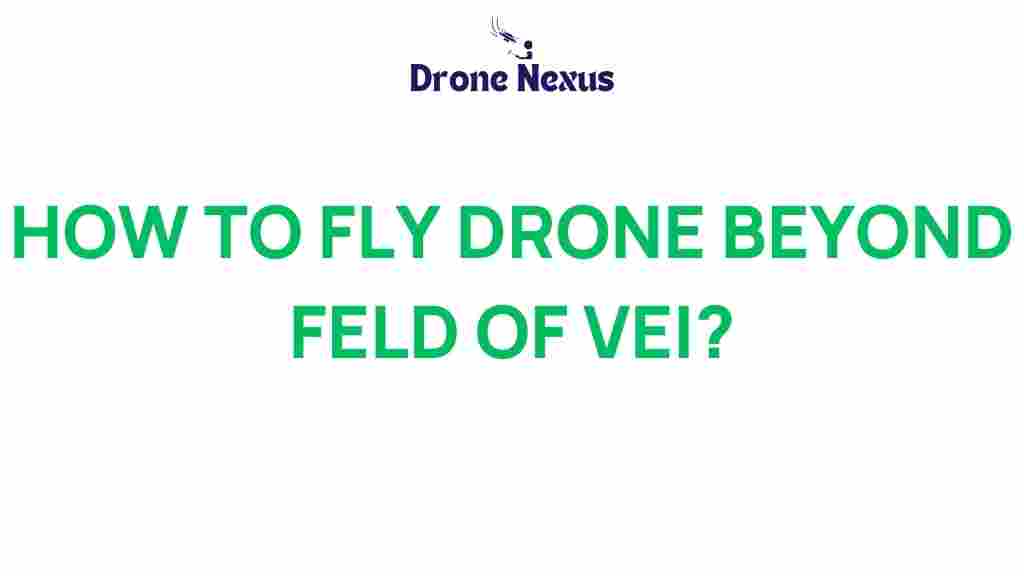Drone Flying: Unlocking the Secrets to Beyond the Field of View
As the world of technology continues to advance, drone flying has become an exciting and essential hobby for many. Whether you are a professional aerial photographer, a mapping enthusiast, or simply someone who enjoys flying remote-controlled devices, understanding how to fly your drone beyond the field of view can significantly enhance your experience. In this article, we will delve into the secrets of drone flying, particularly focusing on techniques, regulations, and safety tips that will help you maximize your drone’s potential.
Understanding Your Drone’s Capabilities
Before you can effectively fly your drone beyond the field of view, it’s crucial to understand its capabilities. Most modern drones come equipped with advanced features that allow for extended flying ranges and improved stability. Here are some key aspects to consider:
- Transmission Range: The distance your drone can fly while maintaining a stable connection with the remote controller.
- GPS Functionality: How your drone uses GPS to maintain its position and return home if it loses signal.
- Camera Resolution: The quality of images and videos captured, especially when flying at high altitudes.
- Battery Life: Understanding how long your drone can stay in the air before needing a recharge.
Preparation for Advanced Drone Flying
Preparation is a crucial component of successful drone flying. Here’s how to get ready for your next adventure:
- Check Local Regulations: Before taking off, ensure you’re familiar with local drone laws and regulations. Websites like FAA provide comprehensive guidelines.
- Equipment Check: Inspect your drone for any damage, ensure that the battery is fully charged, and check that the firmware is up to date.
- Plan Your Flight Path: Use mapping tools to plan your flight path, considering no-fly zones and areas with high interference.
- Weather Conditions: Always check the weather before flying. High winds and rain can affect your drone’s performance.
Techniques for Flying Beyond the Field of View
Once you’ve prepared adequately, you can start exploring advanced techniques that will allow you to fly your drone beyond the field of view. Here’s a step-by-step guide:
1. Utilize First-Person View (FPV) Systems
FPV systems allow you to see what your drone sees in real-time. Here’s how to set it up:
- Purchase an FPV camera compatible with your drone.
- Install the camera according to the manufacturer’s instructions.
- Connect the camera to a video transmitter that sends the live feed to your goggles or screen.
2. Enable Follow Me Mode
This mode allows your drone to autonomously follow you while you move, keeping it in the frame. To activate it:
- Open your drone’s app.
- Select the “Follow Me” or “Tracking” mode.
- Begin moving, and your drone will follow your movements.
3. Use Waypoints for Autonomous Flight
Waypoints allow your drone to fly predetermined paths without constant input from the pilot. Here’s how to set it up:
- Open the mapping feature in your drone’s software.
- Set waypoints on the map where you want your drone to fly.
- Click “Start” to initiate the flight.
4. Master Manual Controls
While automation is useful, mastering manual controls is essential for flying beyond the field of view. Practice these skills:
- Learn how to control altitude, pitch, and yaw independently.
- Practice flying in open areas to familiarize yourself with how your drone responds to commands.
- Engage in simulator training if available for your model.
Troubleshooting Common Issues
Even the most prepared drone pilots encounter issues. Here are common problems and how to address them:
Loss of Signal
If you lose signal with your drone:
- Ensure you are within the operational range.
- Check for physical obstructions or interference from buildings.
- Use the “Return to Home” feature if available.
Battery Issues
Battery problems can cut your flight short:
- Always monitor battery levels during flight.
- Carry extra batteries for extended flying sessions.
- Recharge batteries completely before your next flight.
Camera Malfunction
If your camera is not functioning properly:
- Check the connection between the camera and drone.
- Ensure the camera lens is clean and unobstructed.
- Reset the camera settings through the app.
Safety Tips for Drone Flying
Safety should always be your top priority when drone flying. Here are some essential tips:
- Stay Below 400 Feet: To maintain compliance with regulations and ensure safety.
- Avoid Crowds: Never fly near people or crowded areas.
- Respect Privacy: Be mindful of privacy concerns when flying near residential areas.
- Maintain Visual Line of Sight: Always keep your drone within your line of sight, even when using FPV.
Conclusion: Elevate Your Drone Experience
Drone flying can open up a world of opportunities for creativity and exploration. By understanding your drone’s capabilities, preparing adequately, and using advanced techniques, you can unlock the potential of flying beyond the field of view. Remember to stay informed about regulations, prioritize safety, and practice regularly to become a proficient drone pilot.
For further learning and resources, check out our detailed guide on drone flying techniques. Happy flying!
This article is in the category Technology and created by DroneNexus Team
